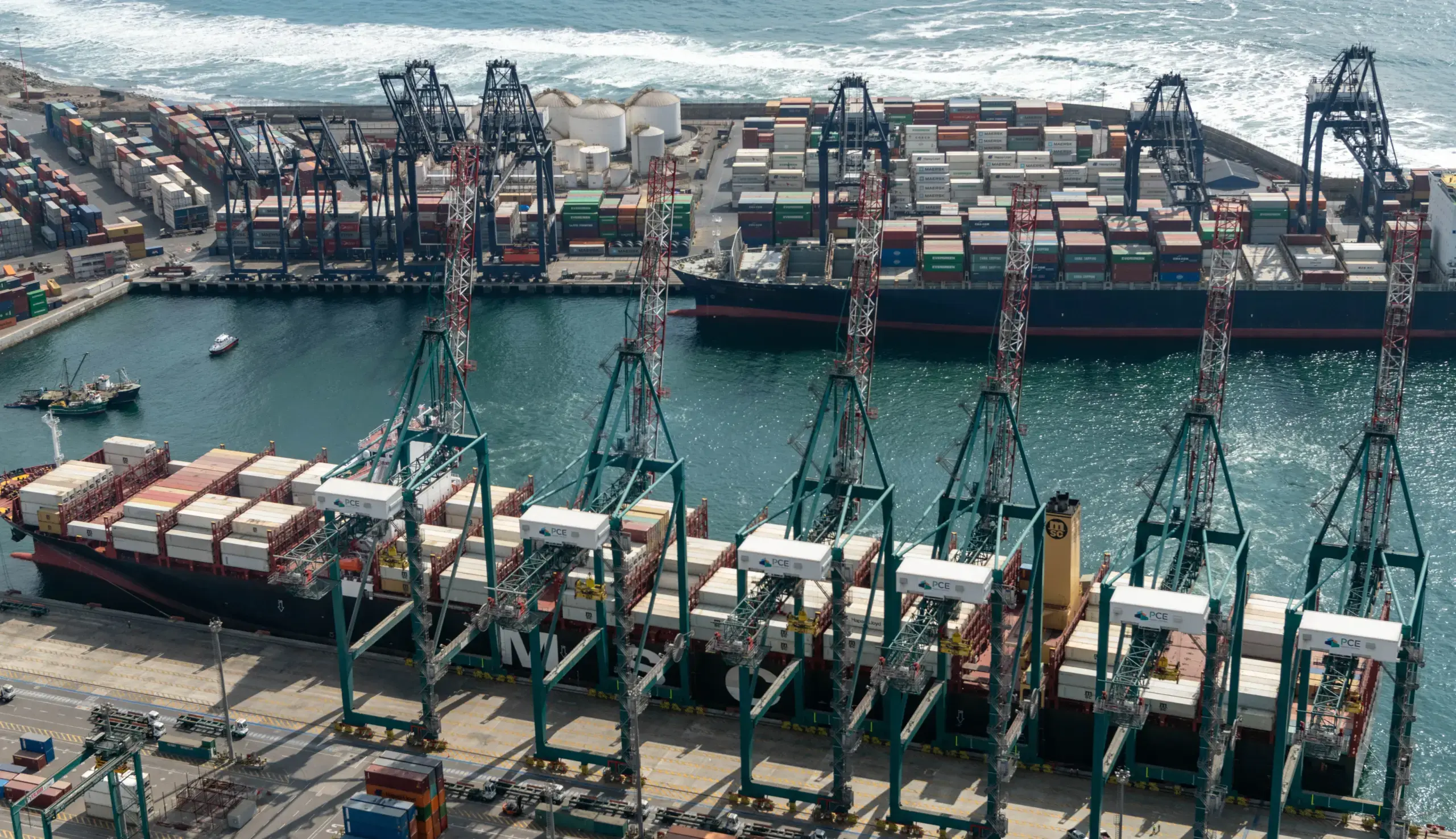
Maritime transport accounted for 96.2% of Chile's foreign trade in 2023, which requires modernizing port infrastructure to continue advancing.
It is in this scenario that the Port of San Antonio, Chile's main port in terms of cargo, and one of the 10 most important in Latin America, will begin an expansion through the construction of the Puerto Exterior project, the largest port infrastructure project in the country's history. With a total investment of US$ 4 billion, the project will expand cargo transfer capacity from the current 1.6 million TEU (Twenty-Foot Equivalent Unit) to 6 million TEU, and will be ready to receive its first vessel in 2036.
The Minister of Transport and Telecommunications, Juan Carlos Muñoz, maintains that the project "is fundamental for the future development of our country".
You have said that this project plays a strategic role for Chile's development. Can you explain this position?
Chile is a country with a deep maritime vocation and, at the same time, a country whose trade is intrinsically linked to the rest of the planet. That is why it is important to have ports that put us at a competitive level with respect to the rest of the world. In order to connect globally, our transports are a bit longer, more distant. This forces us to have efficient logistics. This port is therefore a necessary project to face the international trade projected for the next decades. Today we are looking decades into the future, and projecting the port capacity of our central macro zone, which is where 70% of Chileans live. It is an extraordinarily relevant work in which the State will finance both the sheltering dock and the enabling works.
As a government we are pleased to be able to take over from previous administrations and initiate the bidding process for these works so that future administrations can carry out the entire process. And we expect it to be operational by 2036.
How has this "post" of various governments that you mention been, and what does it mean in terms of the State?
In 2012, during the first government of President Piñera, it was determined that a large-scale port was needed for the central macro zone. Then, the government of President Bachelet defined that the best place for this port was in the San Antonio-Llolleo sector, on the shore of the north side of the mouth of the Maipo River. Later, in 2020, the second government of President Piñera approved the detailed engineering, and the Environmental Impact Study was submitted. At the same time, the bidding conditions were approved by the Tribunal de Libre Competencia.
This is one of those State projects that do us so well as a country, a project that has a transversal consensus regarding the need for our port logistics system to be strengthened with an infrastructure such as the San Antonio Outer Port and where, then, each government takes the baton and hands it over to the next government with an advance.
In your opinion, what are the most significant aspects of this project, in technical terms and in terms of its impact on the country?
It is exciting, to be honest, because of what it means in terms of the engineering challenge, but also because of what it means for the economic development of Chile. There is a broad consensus regarding its importance for the development of the country, but it also seeks to take charge of the relationship with the community. There is an important work that has been done with San Antonio and that we hope will be welcomed as an opportunity to consolidate the port vocation of the area and at the same time leave value in the city.
How does this project enhance Chile's image as a leading country in port infrastructure and logistics at the international level?
This large-scale project, to build a port such as our country does not currently have, also demonstrates Chile's ambition to take a leading role in port logistics. It seems to me that this project puts Chile back in the front line. Historically, our country has generated high standard infrastructure, ambitious projects that transcend governments, State projects that look decades into the future. And with "Puerto Exterior" of San Antonio we are confirming that ambition, that vision that our infrastructure is not designed for today or tomorrow, but for our children and grandchildren. That is what we are working for and we are convinced that it will be a symbol of great prestige for Chile.
The port industry in South America has developed extensively in recent decades, how is Chile positioned in this regard?
Our current port system is adequate for the existing demand, and we are preparing for the increase projected for the coming years. And for that scenario there are investments projected for the port of Valparaíso and for the port of San Antonio. The "Outer Port" is an infrastructure that contemplates a major investment; it is a long, long term vision. Regarding the port of Chancay, in Peru, far from seeing it as a competition or a threat, from Chile we see it as an opportunity for those ships that transport between 14,000 and 18,000 containers a year to the South American coasts, to have more than one port where to arrive. This will make the South American coast more attractive for ships of that size and, in that sense, will improve the competitiveness of the continent as a whole.






